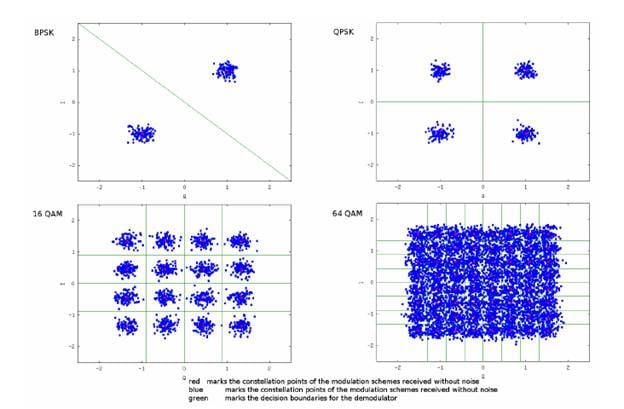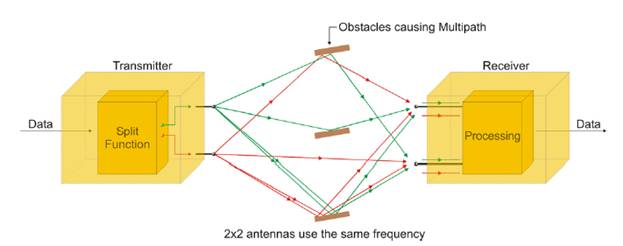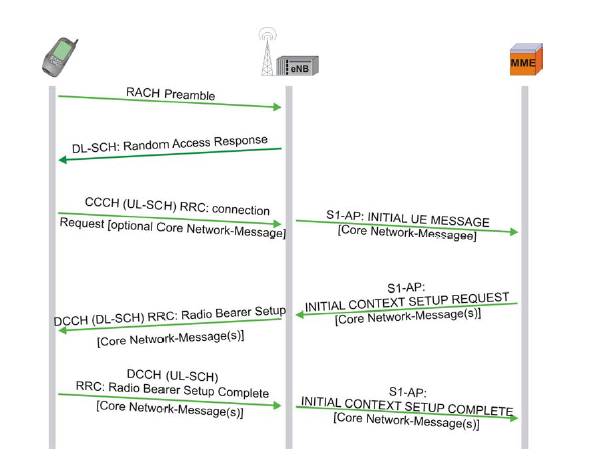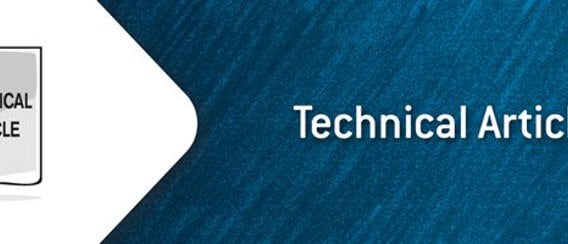Long-Term Evolution (LTE)—Part 2
Part 1 of this article highlighted the increasing need for wireless service providers to turn to long-term evolution (LTE) in order to deploy mobile broadband networks beyond 3G, and examined how this transition to 4G manifests developing trends of mobile radio networks.
Key Technologies
To reach the requirements, especially in the access network, the use of orthogonal frequency division multiplexing (OFDM), higher-order modulation schemes, advanced antenna technologies and a different signaling approach are needed.
OFDMA for Uplink and SC-FDMA for the Downlink
OFDMA works with hundreds to thousands of small bandwidth sub-carriers inside the OFDM carrier and is able to allocate these sub-carriers to different user equipment (UE).
The two key advantages of OFDMA technology are:
- OFDMA allows a simple transmitter and receiver technology for very high data-rates due to the orthogonality of the sub-carriers.
- OFDMA allows to allocate and manipulate small fractions of frequency spectrum: The smallest packet in LTE has a bandwidth of 180 kHz and a length of 1 ms; this is very important for the scheduling of the packets. The scheduler can find the optimum transmission time and the optimum transmission frequency for the packets and thus, is able to allocate the optimum modulation scheme to the packet in order to ensure maximum spectrum efficiency. This is why the spectrum efficiency of LTE can reach multiple times the value of 3GPP Release 6 HSPA.
Actually, OFDMA is only used for the downlink of LTE. The reason is that the amplitude modulation of the OFDM time signal (significant if single carriers are superimposing) would lead to a significantly more expensive power amplifier in the UE’s transmitter. In the uplink, the UE emulates a single carrier on the sub-carrier’s spectrum, while keeping most of the OFDM structure; this is called "single carrier frequency division multiple access (SC-FDMA)".
Higher-Order Modulation Schemes
With higher-order modulation schemes like 64-QAM, the transmitter modulates 6 bits on each sub-carrier of the OFDM carrier; this is three times more bits per symbol than for conventional 3G modulation. To get an advantage from higher modulation schemes, the channel needs to have a good carrier-to-noise and interference ratio to prevent damage by the UE's movement. The UE's moving speed should be limited to a low value—only then can the highest peak data rates be obtained (for any standard). This relates to the fact that the decision space for higher modulation schemes is smaller and the impact of a noisy channel and a moving UE is worse than for a low-order modulation scheme.
The figure below illustrates all the modulation schemes used by LTE for a signal-to-noise ratio of about 18 dB:

Figure 1. LTE modulation schemes
From the illustration above, it can be seen that BPSK and QPSK have no problem being detected at the given signal-to-noise and interference ratio (SNIR)—here, not even channel coding is required. With 16-QAM however, there are some detection problems already and channel coding is required (for 64-QAM, a successful detection without channel coding is impossible).
MIMO
MIMO offers to double or quadruple the peak data rate, which can be obtained with a given modulation scheme without MIMO; a favorable mobile radio-channel propagation and multiple antennas are needed to achieve this.

Figure 2. MIMO principle
The idea behind MIMO is to use a given radio channel several times at the transmitter side and at the receiver side. Because of unique multipath propagation between the different antenna pairs, the receiver is able to separate the signals from the different transmit antennas. As a rough calculation we can assume the following:
Maximum transmit rate = the maximum rate without MIMO x minimum (number of transmit antennas number of receive antennas).
This means that to double the data rate, the eNB needs at least two transmission antennas and the UE needs at least two receive antennas. For a quadruple data rate, the minimum number of antennas is four, respectively. This is where MIMO gets its name: MIMO = multiple input (the transmission antennas)/multiple output (the receive antennas)
New Signaling Approach: Radio Access Network and Core Network Signaling in Parallel
In UMTS (3G) for any new communication with the core network starting from the idle UE, there is a two-step approach:
- Establish a radio resource connection
- Establish the connection to the core
These two steps carried out one after the other, make for quite a long procedure for location of area updates, call establishments, packet data protocol (PDP) context establishments, etc., leading to a control plane latency which would be unacceptable for LTE.
The following figure illustrates the procedure taken in LTE for any communication starting from an idle UE:

Figure 3. Initial context setup procedure
Once the UE is idle, a radio resource connection needs to be established. The key feature of the initial context setup procedure is that radio access network signaling and core network signaling are in parallel. The core network procedure can be anything like a PDP context activation, registration, attachment, tracking area update (replaces location area updates in LTE) etc. The big advantage of this is that the control plane latency is kept extremely low, using this parallel approach. In general, radio-access network signaling can come together with core network signaling in LTE.
LTE UE Categories
Within LTE, different classes for the UE have been defined. This definition relates to the number of MIMO streams, the number of resource blocks and the peak data rates in uplink and downlink.
UE class 1 is LTE's basic UE class. Here, the data rates are comparable with typical HSPA UE’s. In contrast to the UE classes 2-4, the transmission without forward error protection (code rate 1) is not allowed for UE class 1. UE class 1 is limited to 5 MHz, and this class is not capable to perform MIMO. UE classes 2 to 4 are able to process two MIMO streams. UE class 5 is defined to have up to four MIMO streams, which also uses 64-QAM in the UL.
|
UE Classes |
|
||||
|
UE Classes |
Number of MIMO streams |
Max. number of resource blocks |
Peak data rate (Mbit/s) |
||
|
DL |
UL |
||||
|
1 |
1 |
25 (5 MHz) |
5.0 |
2.0 |
|
|
2 |
2 |
43.2 |
14.4 |
||
|
3 |
50 |
86.4 |
28.2 |
||
|
4 |
100 |
172.8 |
57.6 |
||
|
5 |
4 |
326.4 |
86.4 |
||
|
64-QAM |
|||||
Table 1. UE categories
Conclusion
LTE is well prepared to play a key role in 4G. This is true for existing 3GPP operators and new competitors. Cornerstones that make it so appealing to the market are high throughput (uplink and downlink), low latency, high spectrum efficiency and a competitive cost position.
With the introduction of the eNB and the self-organizing network approach, the LTE network is considered to be easy to maintain and operate. It is also designed to be very flexible, with respect to frequency range, bandwidth use and duplex modes. The all-IP network architecture and a connected IMS (or similar) also provides a flexibility in service and business case. The capability of the LTE-SAE to interoperate with existing mobile networks gives the operators an easy migration path towards LTE. LTE can also be seen as a low-cost solution for high data rates.




